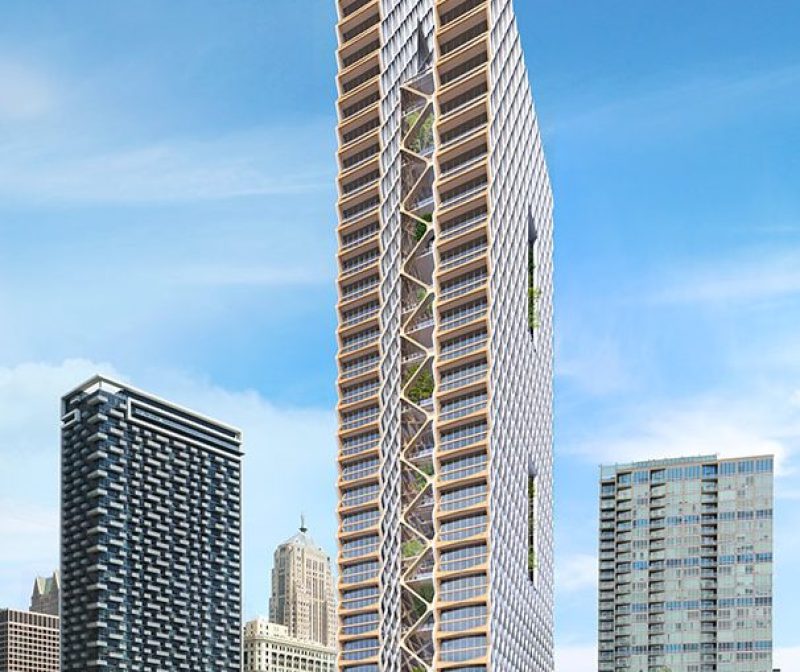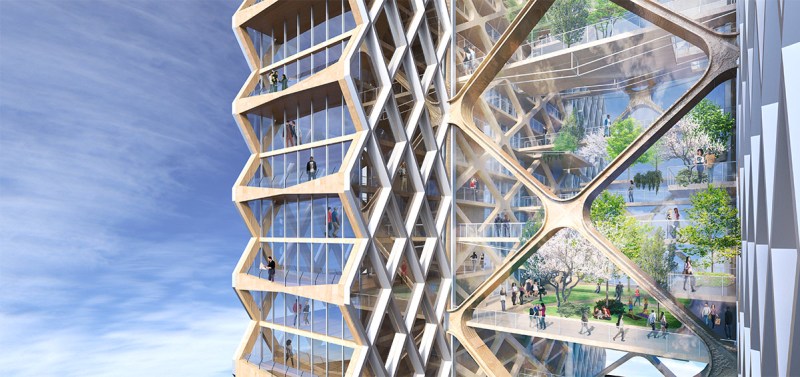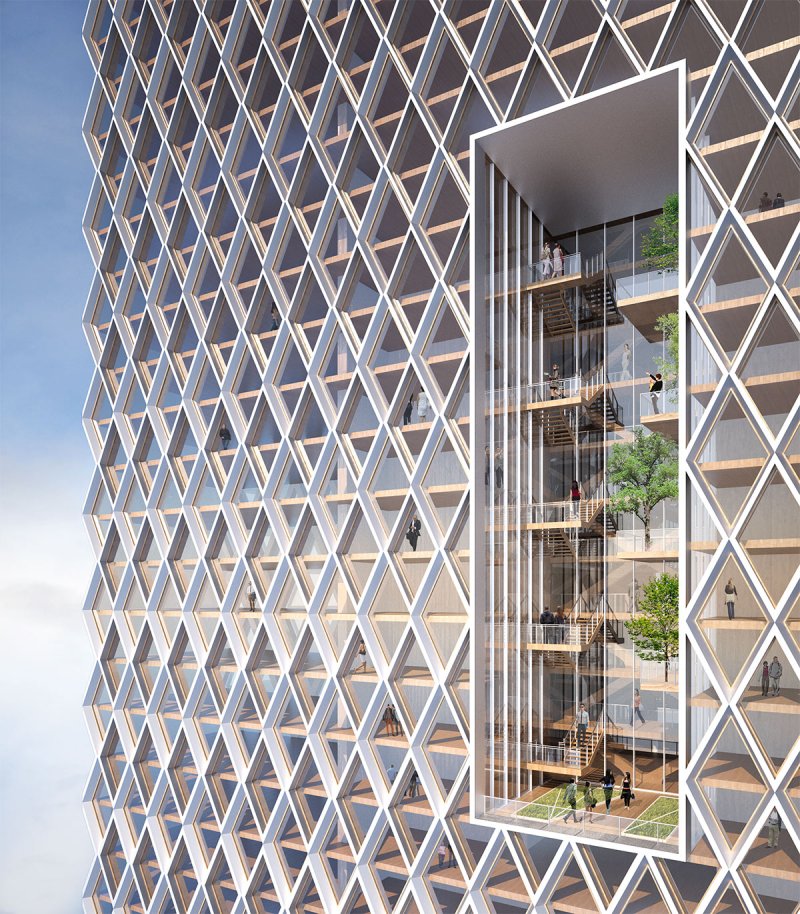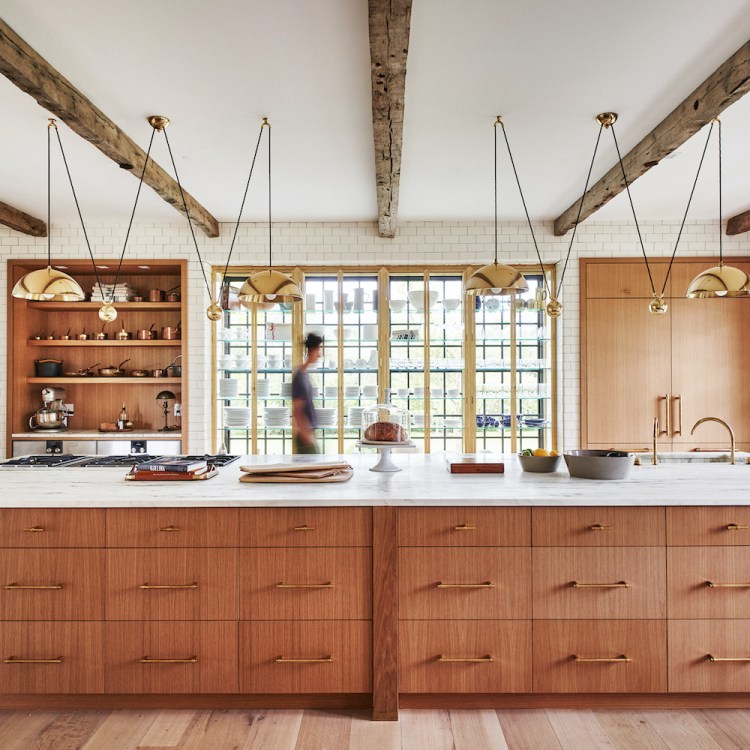
Architecture firm Perkins + Will is conducting a conceptual research study for an 80-story timber tower high-rise in Chicago that’s sited on the city’s 14-acre Riverline development project (although not a planned component of the development). If built, it would be the world’s tallest wooden skyscraper.
Dubbed the River Beech Tower, the proposed skyscraper design is a collaboration with engineering studio Thornton Tomasetti and a team from the University of Cambridge in England. The current plan is for a 300-unit residential building with a central atrium and an aluminum-coated, diagonal-grid framework that maximizes timber’s natural strength.

Using lumber instead of more conventional materials has a couple of major upsides. Cost is the most obvious one, but environmental factors play a role here, too. Concrete and steel production both create lots of toxin-laced gases; according to New York magazine, nearly two tons of carbon dioxide are produced from each ton of steel made.
Because trees soak up carbon dioxide, a timber tower could double as a storage locker for greenhouse gases. And the mass-produced lumber used for construction projects like this one comes from managed forests, which lessens the impact of growing demands for lumber on the ecosystem.

That said, some of the wariness surrounding the idea of a wooden skyscraper is understandable. The Great Chicago Fire is just one horrific example of what could happen if all the majority of buildings in a city were made from lumber. What skeptics may not realize, though, is that construction lumber isn’t the cheap clapboard that was so popular in the 19th century; many advancements in lumber treatment have been made, and today’s mass-produced lumber maintains its structural integrity as well, and sometimes better, than other building materials during a fire.
Lumber also holds up to other natural disasters well: Back in 2009, Japanese engineers stress-tested a seven-story wooden shell building on a massive “shake table” to see how it would respond to a tremor. The building survived the test almost completely unharmed.
It’s worth mentioning that other cities are building timber towers of their own. An 18-story wooden skyscraper is currently underway in Vancouver, and Amsterdam’s 21-story Haut building is scheduled to begin construction later this year. The River Beech Tower is just a larger and more innovative take on this concept; the design has already been shortlisted for a 2016 World Architecture Festival award.

—RealClearLife Staff
This article was featured in the InsideHook newsletter. Sign up now.






















